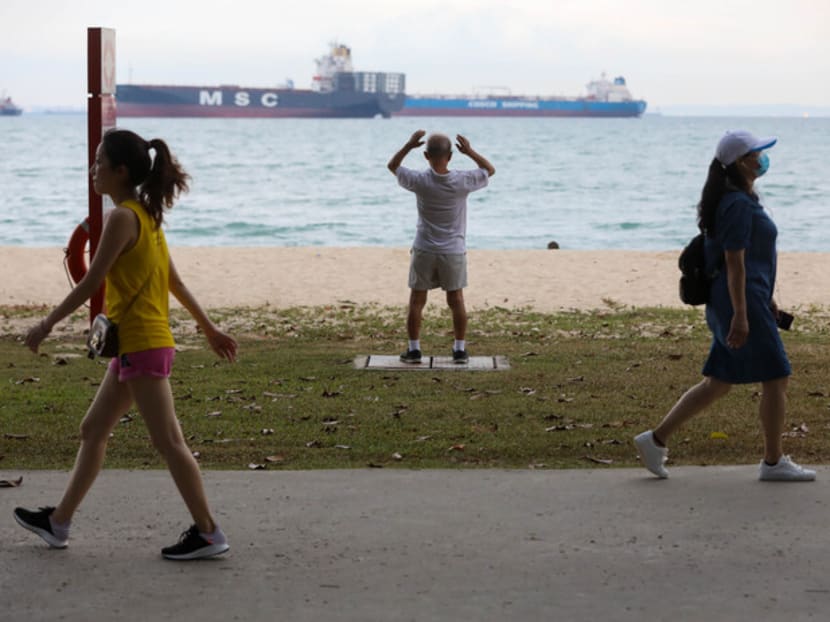Allowing outdoor exercise an example of Govt's ‘careful calibration' of circuit breaker, says Lawrence Wong
SINGAPORE — Allowing residents to leave their homes to exercise with safe distancing amid the circuit breaker is one example of how the Government has opted for a calibrated approach, not a “full lockdown” as some people have suggested, said National Development Minister Lawrence Wong on Monday (May 4).
SINGAPORE — Allowing residents to leave their homes to exercise with safe distancing amid the circuit breaker is one example of how the Government has opted for a calibrated approach, not a “full lockdown” as some people have suggested, said National Development Minister Lawrence Wong on Monday (May 4).
Giving an update on the Covid-19 situation in Singapore to Parliament, Mr Wong said that different countries have implemented different measures, even though they all use the same term and call it a “lockdown”.
“So what’s more important is to understand the specific measures that are needed in our own context and circumstance. The most effective way to slow down the spread of the virus is to restrict movement control altogether,” said Mr Wong.
He said one example of the Government’s “careful calibration” is allowing outdoor exercise with safe distancing measures in place, because the risk of transmission is low and prohibiting outdoor exercise could prove to be harmful for people who are cooped up at home for a long time.
“Going out for exercise is beneficial for your immunity and health. There is a risk of transmission only if you remain close to another person for some time," he added.
Mr Wong was responding to Potong Pasir Member of Parliament Sitoh Yih Pin's question on whether the authorities should make it compulsory for people to wear masks even when engaging in strenuous exercise outside homes.
Noting that such a requirement was not advisable because it could pose health risks, he said the “more fundamental issue is whether we want to allow people to go outside to exercise in the first place”.
Keeping everyone at home also comes with substantial economic and social costs, and the impact is disproportionately felt by the low-income and vulnerable Singaporeans.
“They are less likely to be able to telecommute for work, and so staying home will affect their livelihoods. Being isolated at home for long periods is also not good for their health and overall wellbeing,” said Mr Wong, who also co-chairs the multi-ministry task force on Singapore’s effort to combat Covid-19.
These sort of considerations meant that deciding whether to implement the circuit breaker measures and to extend them for a month was difficult, he added.
“In the end, we decided we had to proceed with this, so as to break the transmission chain, and slow down the spread of the virus,” he said.
The careful adjustments made based on existing evidence have always marked Singapore’s approach, even at the start of the Covid-19 crisis.
Mr Wong pointed to the many travel restrictions announced throughout February and March as examples of how the Government has continually updated its risk assessments and then adjusted its measures accordingly.
“For members of the public, I can appreciate that it is difficult to keep up with the changes. But I hope everyone appreciates and understands that we are responding to a dynamic and fast changing situation,” he said.
Singapore also had to adapt and adjust as the scientific community learned more about the coronavirus which causes the Covid-19 disease.
“That’s why we updated our guidance on masks as we learnt more about the virus, and made it a requirement for everyone to wear masks when they go out,” he added.
As Singapore continues to fight the pandemic — which Mr Wong said is far from over — the Government will continue adopting the same evidence-based approach to assess the transmission risks, and then make careful and calibrated adjustments.
Responding to suggestions from Nominated Members of Parliament Walter Theseira and Anthea Ong who asked for an inquiry to be convened to look into the cause of the outbreak at foreign worker dormitories, Mr Wong said the focus now is to bring the outbreak under control within the local community and in the dormitories.
“But we are now still in the heat of battle… At the right time, we will comprehensively review this pandemic and our responses — not just the outbreak in the dormitories, but the entire crisis from start to end, and our overall response, and we will seek to learn and improve.
“I have no doubt that we will find many things where we could have done better, and many changes that we should make to be better prepared the next time,” said Mr Wong.









